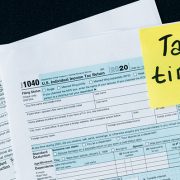Who Does the IRS Consider to Be a Qualifying Relative?
The IRS recently announced that it plans to issue regulations to reduce the personal exemption amount to zero for tax years 2018 through 2025, provided the reduction will not be factored into determining if someone is a qualifying relative under Sec. 152(d)(1)(B) in Notice 2018-70.
Thus, in defining a qualifying relative who meets the provisions of the Internal Revenue Code that refer to the definition of a dependent in Sec. 152, including for the purposes of the new $500 credit for other dependents under Sec. 24(h)(4) and head-of-household filing status under Sec. 2(b), the exemption amount will be $4,150, adjusted for inflation.
In the notice, the IRS states Section 152(a) of the code defines a “dependent” as a “qualifying child” or a “qualifying relative.” Section 152(d)(1) defines a “qualifying relative” as an individual who:
(A) bears a specific relationship to the taxpayer,
(B) whose gross income for the calendar year in which the taxable year begins is less than the exemption amount (as defined in §151(d)),
(C) who receives over one-half of his/her support from the taxpayer for the calendar year in which the taxable year begins, and
(D) who is not a qualifying child of the taxpayer or any other individual for any taxable year beginning in the calendar year in which the taxable year begins.
If the reduction in the exemption amount was taken into account for all code provisions, the IRS explained, virtually no one would be a qualifying relative, effectively eliminating an entire category of dependents and greatly reducing the availability of the new $500 credit for other dependents and head-of-household filing status. The IRS stated that it did not believe Congress intended any of these results.
Therefore, the IRS intends to issue regulations defining who is a qualifying relative under the code and stating their exemption amount will be $4,150, adjusted for inflation. Taxpayers may rely on the treatment in the notice until the regulations are issued.
Section 151(d) provides for two different exemption amounts for taxable years 2018 through 2025. For the purposes of determining whether a deduction is allowed for personal exemptions, §151(d)(5)(A) requires that the exemption amount be zero, thereby suspending this deduction.
But for other provisions of the code that reference the deduction for other purposes, Congress indicated in §151(d)(5)(B) that the reduction of the exemption amount to zero is not to be taken into account. Instead, the exemption amount should remain $4,150 for 2018 (adjusted for inflation in future years).
Construing §152 in light of the structure of the statute, the Treasury Department and the IRS believe the exemption amount referenced in that section must be $4,150 (adjusted for inflation) rather than zero for the purposes of determining who is a qualifying relative. This interpretation accords with § 151(d)(5), which aims to suspend the deduction for personal exemptions without substantively changing other code provisions that directly or indirectly reference the §151(d) exemption amount.
SOURCE: https://www.accountingweb.com/tax/irs/who-does-the-irs-consider-to-be-a-qualifying-relative
AUTHOR: Terry Sheridan – https://www.accountingweb.com/profile/terry-sheridan













